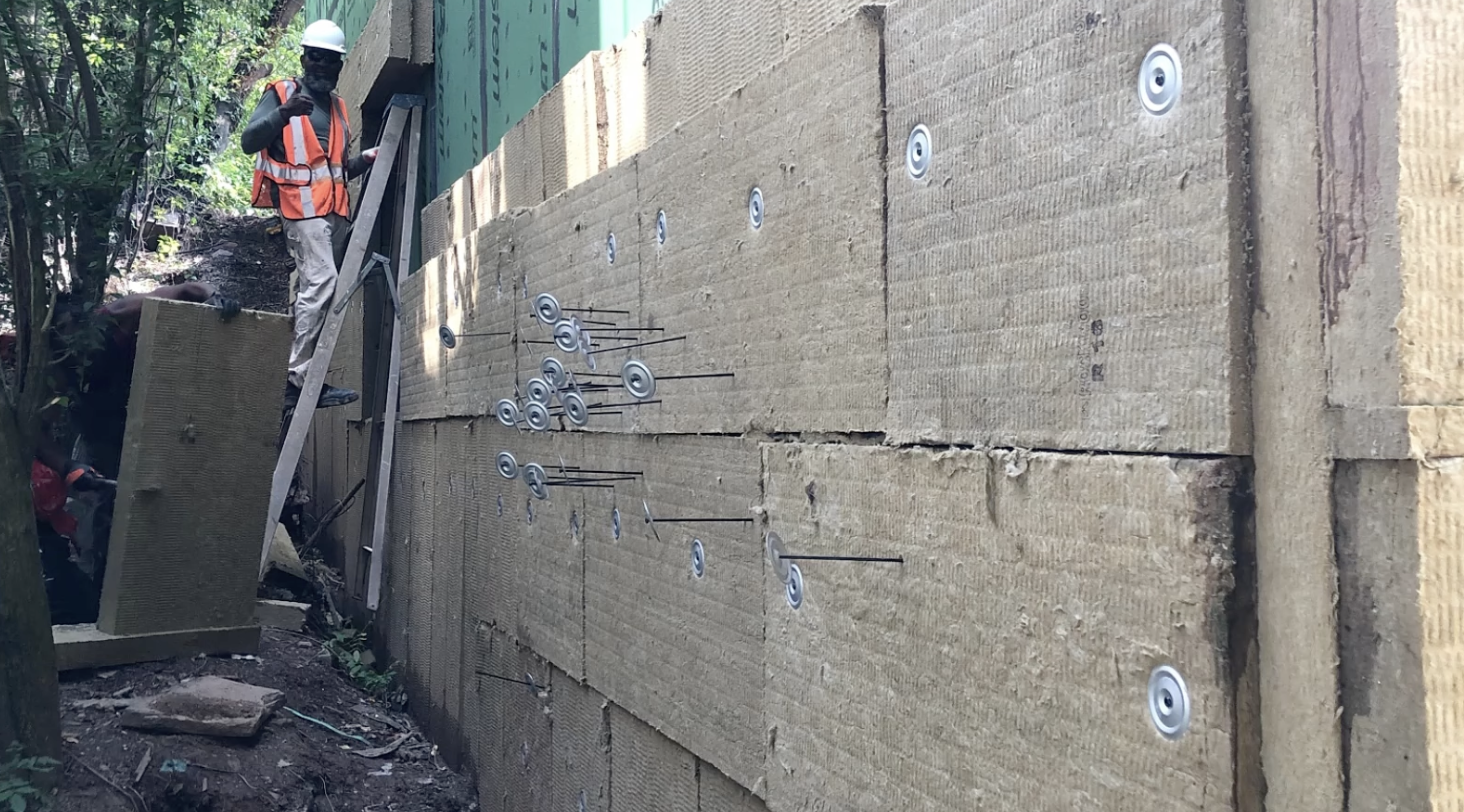Green Building Community
How Effective is ROCKWOOL Stone Wool Insulation Against Water?
Posted by: Rate It Green Team
What happens to ROCKWOOL stone mineral or stone wool insulation when it gets wet? This is an important question, as insulation is installed on the outside of the house, on the roof, on the walls, and underneath the foundation. All of these are areas where this building material will likely come into contact with water at some point.
As Matt Hoots of Sawhorse, Inc. and Chris Laumer-Giddens of LG Squared, Inc. note, the good news is that ROCKWOOL has incredible drying potential, and wicks moisture right away. It also won’t degrade in water. Chris points out this makes sense as stone wool is literally made of rock. ROCKWOOL also holds its form. The rigid foam board on the outside of the #1920sMakeoverATL project is thick and sturdy and isn’t a batt type insulation. Even the insulation inside cavities is still more rigid than most insulation - there’s no sagging at the same rate as fiberglass or cellulose.
Chris notes that the insulation is not effective if it’s completely saturated and will not provide the normal r value completely wet, but, “At that point you have other, bigger problems than R value.” Saturation is only really likely below grade, and to saturate stone wool, this means water is flowing to the house consistently and can’t drain, or there’s a water water table. It’s key in these situations to get water away from the house, for quite a few reasons. (Also, other insulation won’t perform in this circumstance either.)
Above grade, saturation is also almost never a challenge. It means a roof was ripped off from a storm, or water is literally constantly flowing for some reason. As long as water can drain, ROCKWOOL will dry out and perform fully. Humidity and day to day moisture are not a problem, and airborne moisture and vapor won’t degrade the product. Fiberglass will also dry out, but not as fast, as it hold moisture longer and so it’s a bit more vulnerable (think wet cotton candy).
Key is that the wall assembly must be built properly; the control layers must be correct and the water can not be blocked from getting out.


.png)
Please be kind and respectful!
Please make sure to be respectful of the organizations and companies, and other Rate It Green members that make up our community. We welcome praise and advice and even criticism but all posted content and ratings should be constructive in nature. For guidance on what constitutes suitable content on the Rate It Green site, please refer to the User Agreement and Site Rules.
The opinions, comments, ratings and all content posted by member on the Rate It Green website are the comments and opinions of the individual members who posts them only and do not necessarily reflect the views or policies or policies of Rate It Green. Rate It Green Team Members will monitor posted content for unsuitable content, but we also ask for the participation of community members in helping to keep the site a comfortable and open public forum of ideas. Please email all questions and concerns to admin@rateitgreen.com

